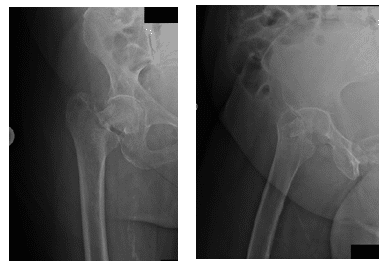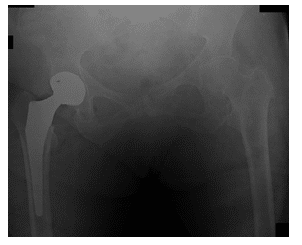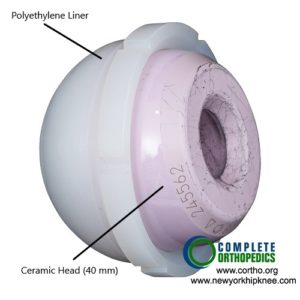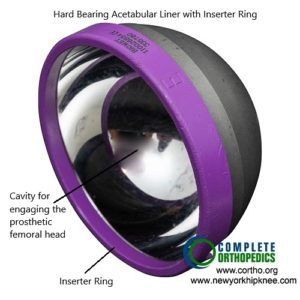Patient is a 73 year old male who came in with right hip pain. Upon review of X-Rays it was determined that the patient had a fracture of the hip, and severe degenerative arthritis of the right hip.
Patient was advised that a right Total Hip Arthroplasty (THA) would be the best approach to have the greatest relief. All alternative options were thoroughly discussed with the patient, including a THA or a partial hip replacement, with a THA being the suggested approach.
It was explained to the patient that a THA had greater benefits over a partial hip, including that with THA’s there is a lower reoperation rate and an overall higher functional score without any increase in complications, whereas a partial replacement has no outstanding benefits over a THA.
With partial hip replacements, it is common that the metal of the prosthesis rubs against the cartilage which can cause severe pain, and the only approach to fix this is another surgery. Only exceptional cases, in which a partial replacement is preferred, is if the patient has severe medical problems that may cause risks in a THA.
Afterhearing the options, the patient had chosen to proceed with the THA procedure.

Pre-operative X-Rays shows severe degenerative right hip arthritis

Post-operative X-Rays show Right Total Hip Arthroplasty
Upon follow-up the patient was doing well and had good relief. At subsequent visits the patient was weight bearing as tolerated and had good range of motion.

Polyethylene Acetabular Liner with Ceramic Head
A highly cross-linked polyethylene liner is generally used in total hip replacement surgery. The polyethylene liner fits inside a metal acetabulum shell.

Metal Acetabular Liner
Metal acetabulum shells were used in metal on the metal bearing surfaces. In the case of metal on metal, both the head of the prosthetic implant and the cup are made of metal. These are used in partial hip replacement and hip re-surfacing but are generally falling out in favor of total hip replacement.
*Patient identifiers and dates changed to protect patient privacy.


